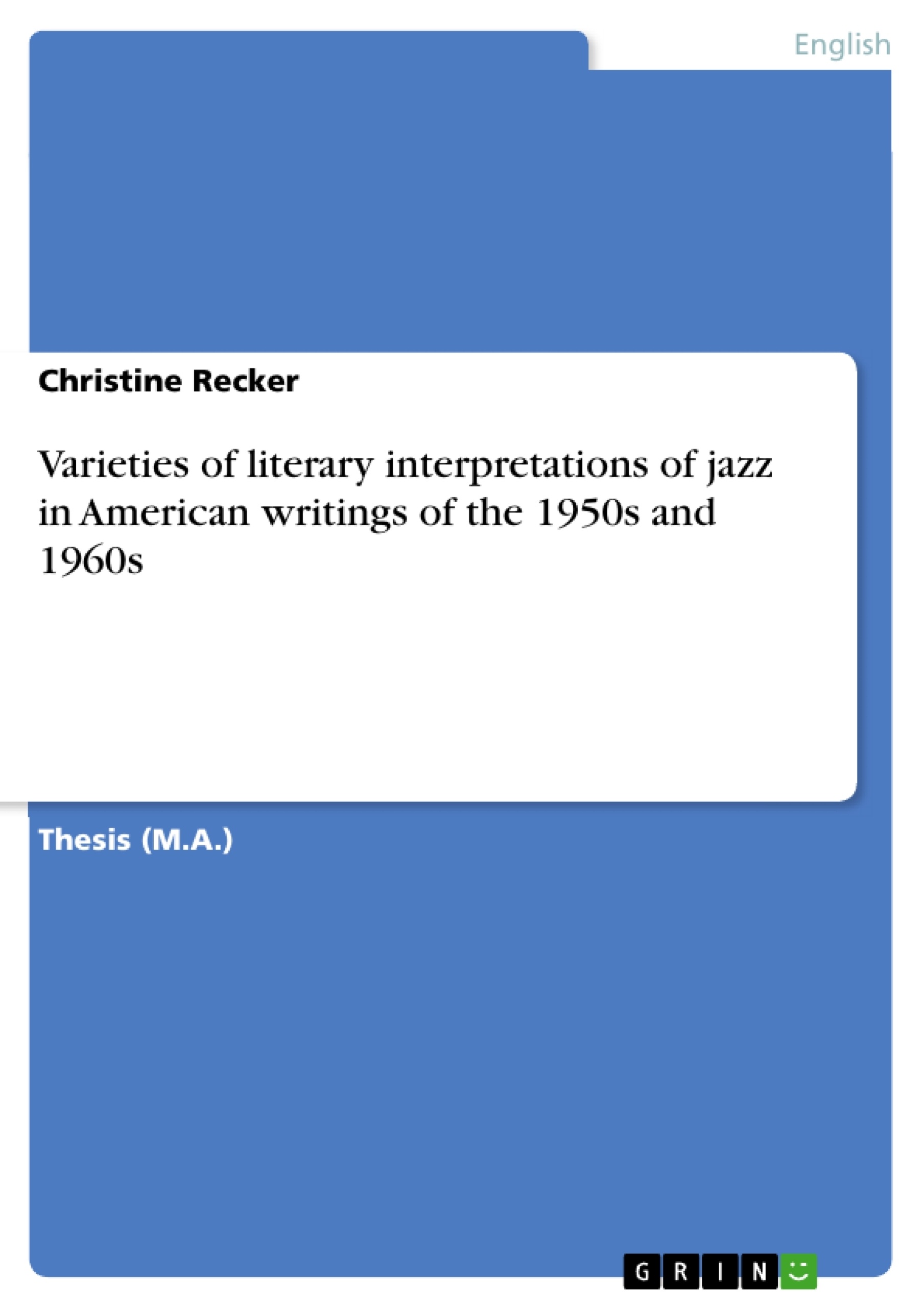In a retrospective, black musical forms experienced a fast stylistic development and an increasing popularity amongst a wide audience of artists and youngsters inclined to American subculture all through the 1940s, ‘50s, and ‘60s.
One of the most influential and significant among these musical forms was jazz music. Writers began to apply it to their own work in manifold ways. From a retrospective, the effect of this convergence of jazz and literature, which is now commonly referred to as ‘jazz literature’, was mostly structural or thematic (and sometimes even both), and would soon cover a great variety of different literary genres.
The present thesis aims to identify the various ways in which writers applied their experiences with jazz music to their writings. It covers different literary genres and authors, such as John Clellon Holmes, Amiri Baraka, Jack Kerouac, and James Baldwin.
Table of Contents
- Introduction
- Features of Jazz Music
- The Jazz-Literature Connection
- James Baldwin: "Sonny's Blues"
- Overview
- "Sonny's Blues"
- Synopsis
- The Story and its Characters
- The Jazz and Blues Motif in "Sonny's Blues"
- John Clellon Holmes: The Horn
- Overview
- The Horn
- Synopsis
- The Story and its Characters
- Jazz Music in The Horn
- Jack Kerouac, Jazz, and the Method of Spontaneous Prose
- Overview
- Spontaneous Prose and Jazz
- On the Road
- The Subterraneans
- Visions of Cody
- The Jazz Poetry of Amiri Baraka
- Overview
- Baraka's Jazz Poetry: Selected Examples
Objectives and Key Themes
This Master's thesis examines the influence of jazz music on American literary works from the 1950s and 1960s. It aims to identify and analyze how jazz music is incorporated into these writings, both structurally and thematically. The thesis explores the impact of jazz on the narrative, characters, and overall artistic vision of the authors studied.
- The evolution and characteristics of jazz music in the 1950s and 1960s
- The convergence of jazz and literature, forming the genre of "jazz literature"
- The portrayal of jazz culture and its impact on American society
- The use of jazz motifs, rhythms, and language in literary works
- The relationship between jazz improvisation and literary expression
Chapter Summaries
The thesis begins with an introduction outlining the historical context of jazz music in the 1950s and 1960s and its significance as a cultural force. The first chapter delves into the specific features of jazz music, highlighting its key characteristics and its impact on American society.
The second chapter examines the connection between jazz and literature, discussing the emergence of "jazz literature" as a genre and its defining features. The thesis then moves on to in-depth analyses of individual literary works, exploring how jazz music influences their themes, characters, and narrative structure.
Chapter 4 focuses on James Baldwin's "Sonny's Blues," analyzing how the story utilizes jazz music to explore themes of identity, family, and redemption. Chapter 5 examines John Clellon Holmes' "The Horn," highlighting how the novel employs jazz music to portray the struggles and triumphs of a jazz musician in postwar America.
Chapter 6 delves into the work of Jack Kerouac, investigating his use of spontaneous prose as a literary technique inspired by jazz improvisation. The chapter explores how this method shapes Kerouac's narratives, particularly in works like "On the Road" and "The Subterraneans."
Chapter 7 concludes the analysis of individual works by exploring the jazz poetry of Amiri Baraka. The chapter examines how Baraka's poetry utilizes jazz rhythms, improvisational techniques, and themes to express his political and social views.
Keywords
This thesis explores the connections between jazz music and literature, focusing on American writings from the 1950s and 1960s. The key terms and concepts explored include jazz literature, improvisation, rhythm, blues, identity, social commentary, and the influence of African American culture on American society. Notable authors analyzed include James Baldwin, John Clellon Holmes, Jack Kerouac, and Amiri Baraka. The thesis examines the impact of jazz on these authors' works through thematic analysis and a study of narrative structure.
- Quote paper
- Christine Recker (Author), 2006, Varieties of literary interpretations of jazz in American writings of the 1950s and 1960s, Munich, GRIN Verlag, https://www.grin.com/document/91151



